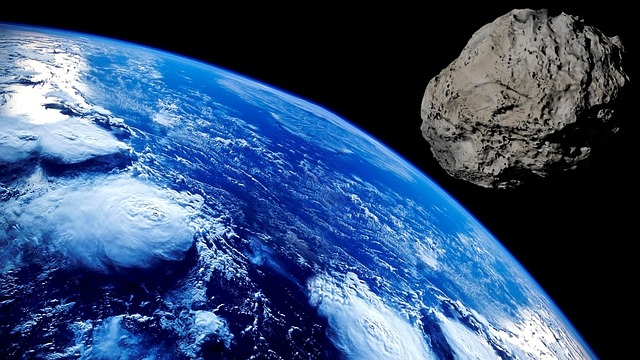
Asteroid impacts on Earth became more frequent around 290 million years ago, according to scientists.
The Earth has been hit by asteroids for nearly a billion years now, but our planet's atmosphere has succeeded in stopping most of them from bringing about a catastrophe. Some of them, however, still managed to pierce through the shield provided by the atmosphere and hit Earth, including the space rock that caused the extinction of the dinosaurs 66 million years ago. And it seems the asteroid impacts have only become more frequent, but scientists are still baffled as to why this is so.
A study published in the journal Science showed that the number of asteroids that actually hit the surface of the Earth and the Moon doubled or tripled in amount starting from the Paleozoic era, which was between 544 to 245 million years ago.
The study's lead author Sara Mazrouei, a recent PhD graduate of the Department of Earth Sciences in the Faculty of Arts & Science at the University of Toronto (U of T), said that the rate of asteroid impacts is currently 2.6 times higher than it was prior to 290 million years ago.
"It was a painstaking task, at first, to look through all of these data and map the craters out without knowing whether we would get anywhere or not," Mazrouei said in a statement.
Scientists previously thought that craters created by asteroid impacts that were older than 290 million years had disappeared due to erosion and other geologic processes. However, Rebecca Ghent, co-author of the study and associate professor in U of T's Department of Earth Sciences, said the reason why there are less older craters on Earth is that the rate of asteroids entering the planet and hitting the surface was much lower at the time.
"The relative rarity of large craters on Earth older than 290 million years and younger than 650 million years is not because we lost the craters, but because the impact rate during that time was lower than it is now," Ghent said. "We expect this to be of interest to anyone interested in the impact history of both Earth and the Moon, and the role that it might have played in the history of life on Earth."
For decades, scientists have been trying to determine how often asteroid impacts occur with the use of radiometric dating on the rocks around the craters to calculate their ages. However, due to the initial belief that craters were erased by erosion over time, an accurate impact rate had never been calculated. Scientists had also been unable to determine if the rate changed over the years.
Scientists previously studied the rate of asteroid impacts on the Moon, which has been hit in the same proportions over time as Earth. NASA's Lunar Reconnaissance Orbiter (LRO), which began orbiting the Earth's natural satellite 10 years ago and studying its surface, provided data for scientists to be able to determine the ages of the craters on the Moon.
With the use of data from LRO's Diviner instrument, a radiometer that measures the heat radiating from the Moon's surface, LRO project scientist at NASA Goddard Space Flight Center Noah Petro and his team monitored the rate of degradation of young craters. They were then able to create a list of the ages of all asteroid impact craters on the Moon that were younger than 1 billion years.
When scientists compared the ages of the Earth's craters to that of the Moon's, it was found that our planet and its satellite had the same amount and rate of asteroid impacts.
"It became clear that the reason why Earth has fewer older craters on its most stable regions is because the impact rate was lower up until about 290 million years ago," William Bottke, another co-author and an asteroid expert at the Southwest Research Institute in Boulder, Colorado, said. "The answer to Earth's impact rate was staring everyone right in the face."
It is still unclear why the rate of asteroid bombardment tripled within the last 290 million years. For now, scientists believe that the increase may be connected to the large collisions in the main asteroid belt between the orbits of Mars and Jupiter around 300 million years ago. The collision may have produced space debris that reached as far as Earth and the Moon.









